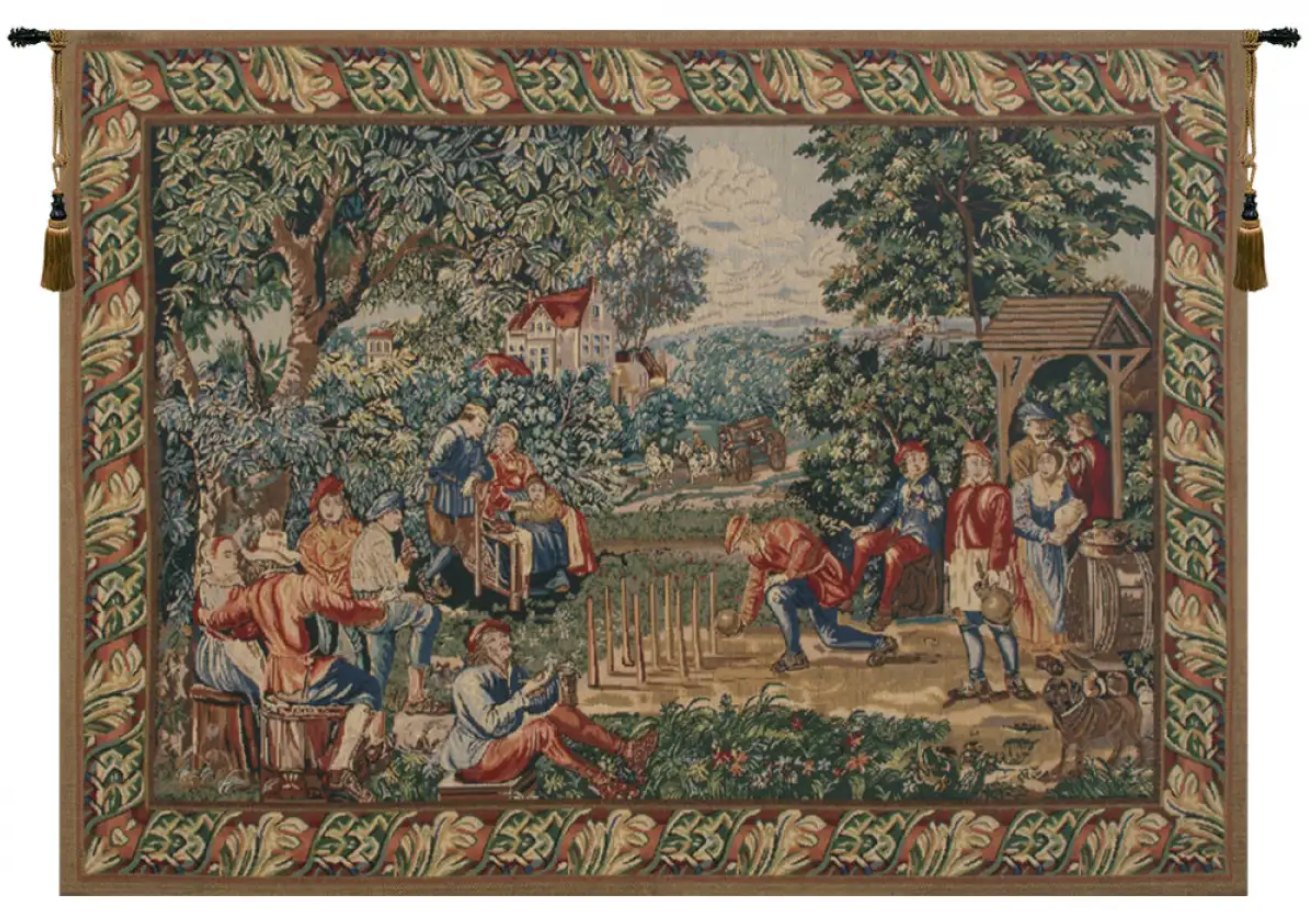
History of Belgian Tapestry | About Belgian Tapestries
[vc_row][vc_column][vc_column_text]
Belgian tapestry has a history that spans several centuries, firmly establishing Belgium as a prominent hub for tapestry production in Europe. Renowned for their exquisite designs and exceptional quality, Belgian tapestries hold a special place in the realm of decorative art and are also highly coveted by collectors.
The tapestry industry in Belgium flourished during the Renaissance period. It captured the attention and admiration of nobles and affluent patrons, and they used Belgian tapestryto adorn their homes, churches, and castles because of its luxurious creations. Delicate tapestries known as “Millefleurs,” featuring intricate floral patterns, survive as a testament to this era. Brussels, Tournai, and Oudenaarde emerged as influential centers of tapestry weaving, housing masterful artisans skilled in weaving, embroidery, and appliqué techniques. Famous artists like Peter Paul Rubens and Jacob Jordaens contributed their talents by designing tapestry cartoons, serving as blueprints for the weavers.
[/vc_column_text][vc_single_image image=”63394″ img_size=”large” alignment=”center”][vc_column_text]
About Belgian Tapestry History
Belgian tapestries bring to life historical events, mythological tales, landscapes, religious motifs, and hunting scenes. Their vibrant color palettes and diverse motifs, including figures, animals, flowers, and architectural elements, contribute to their captivating allure.
The Baroque and Rococo periods witnessed the continued prosperity of tapestry production made in Belgium. By incorporating the ornate Baroque grandeur and the delicate aesthetics of the Rococo, the Brussels workshops adapted to the evolving artistic tastes. The workshops in Oudenaarde and Tournai also thrived during this era, adding to the rich tapestry heritage of Belgium.
In the 19th century, there was a notable rebirth of people’s interest in tapestry weaving. The Belgian government and royalty actively supported this revival and encouraged the establishment of new workshops and schools. Ghent became a prominent center for tapestry manufacturing, particularly renowned for reproducing historical designs.[/vc_column_text][vc_single_image image=”63397″ img_size=”large” alignment=”center”][vc_column_text]
Crafted From Premium Materials
Historically, Belgian tapestries were crafted from luxurious materials such as silk and wool and occasionally enriched with gold or silver threads. Today, while still honoring traditional fibers, modern Belgian tapestries may incorporate synthetic materials to meet contemporary needs.
Belgium remains a significant stronghold of tapestry production, with numerous workshops and manufacturers dedicated to preserving and promoting this cherished craft. Authentic Belgian tapestries, highly treasured for their artistic value, can be found in museums, historic houses, and esteemed private collections worldwide.[/vc_column_text][vc_column_text]
Conclusion
Currently, Belgian tapestry weaving continues to flourish as a respected art form. Diligent workshops, manufacturers, and artists uphold traditional techniques while striving to create high-quality tapestries. Exhibited in museums, gracing historic estates, and adorning private collections, Belgian tapestries stand as timeless testaments to the rich tapestry heritage of Belgium.[/vc_column_text][/vc_column][/vc_row]